“The sky is that beautiful old parchment in which the sun and the moon keep their diary”
This quote from modernist poet and writer Alfred Kreymborg wonderfully encapsulates the character and qualities of parchment conjuring up landscapes of colour and the faded, textured pages of a book.
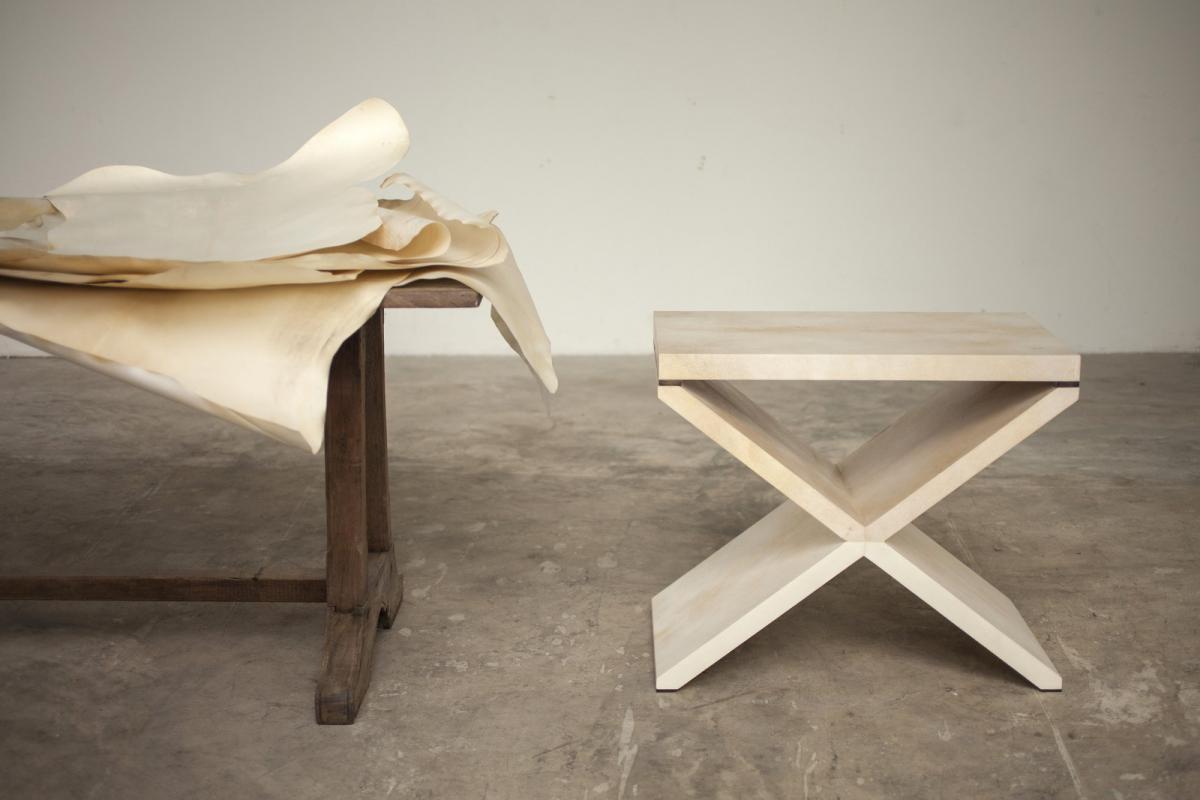
Parchment skins can be used for calligraphy and as a surface material for furniture
Parchment is most well known as a writing material that has been used for over two millennia. The word derives from the name of the city Pergamum in Anatolia where the material was first developed as a replacement for papyrus. Parchment is made from the raw hide of animals that is cleaned and stretched over wooden frames to create a thin, versatile material. Once used in the religious manuscripts and medieval leather-bound volumes of Western culture, parchment was transformed by the great European designers of the early 20th century to become one of the most rarefied and luxurious decorative materials applied to hand-crafted furniture, wallcoverings and accessories.
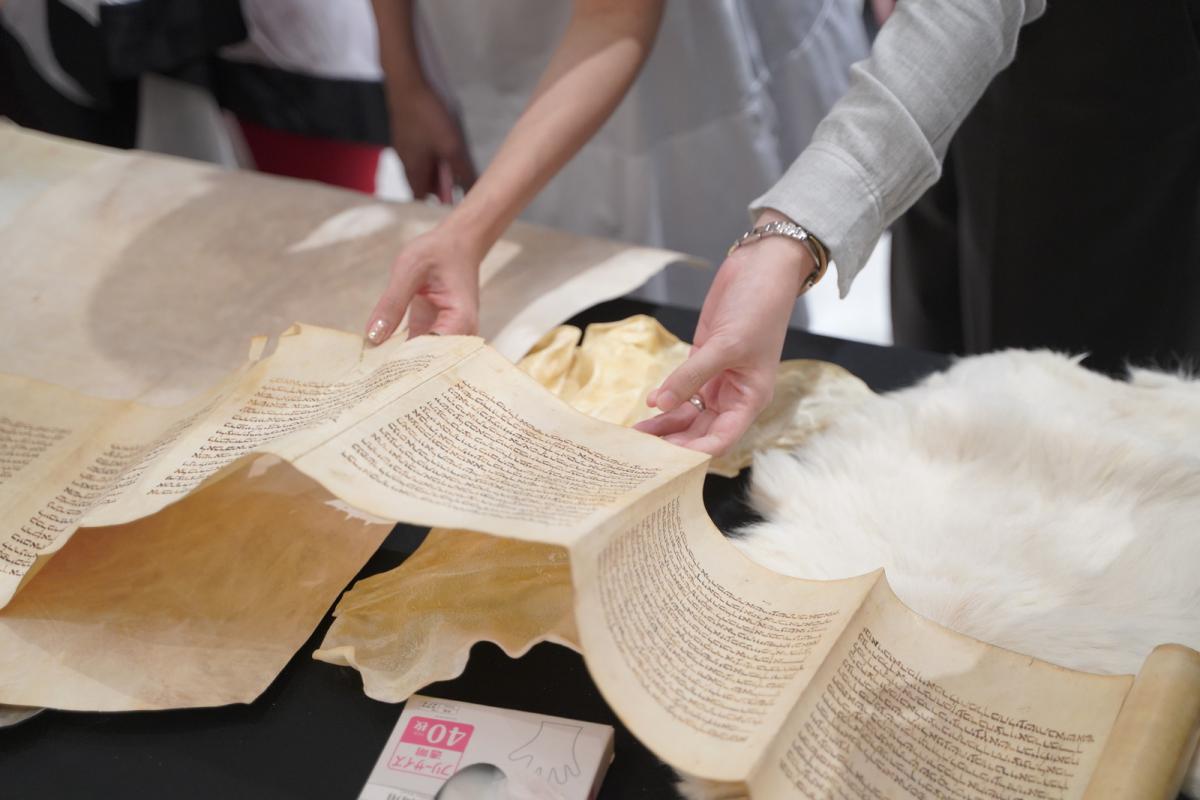
Parchment Workshop by Mr. Kenji Yagi A history of parchment.
The first time I saw parchment used as a decorative material was in black and white pictures of the living room of the Vicomte de Noailles in Paris, designed and realized by Jean-Michel Frank.
It looked like a stormy sky, the contrasting tones of the natural parchment skins creating a highly organic effect that you would almost never see today.

Main living room of Vicomte Charles de Noailles, Paris photographed by Man Ray in 1929
There are two types of materials in the world: natural ones such as straw marquetry, shagreen, natural lacquer and parchment; and manmade ones such as liquid metals, cloisonne, resins and other synthetic and processed materials. Both types have potential for beauty and for intricate hand craft. However I am always drawn to the natural ones. These have an organic beauty to their surface, something unique and intriguing in their texture, as well as a deep provenance in centuries of craft tradition. They also lend themselves well to innovation through re-imagined techniques and design that keep them fresh and relevant to contemporary interiors.
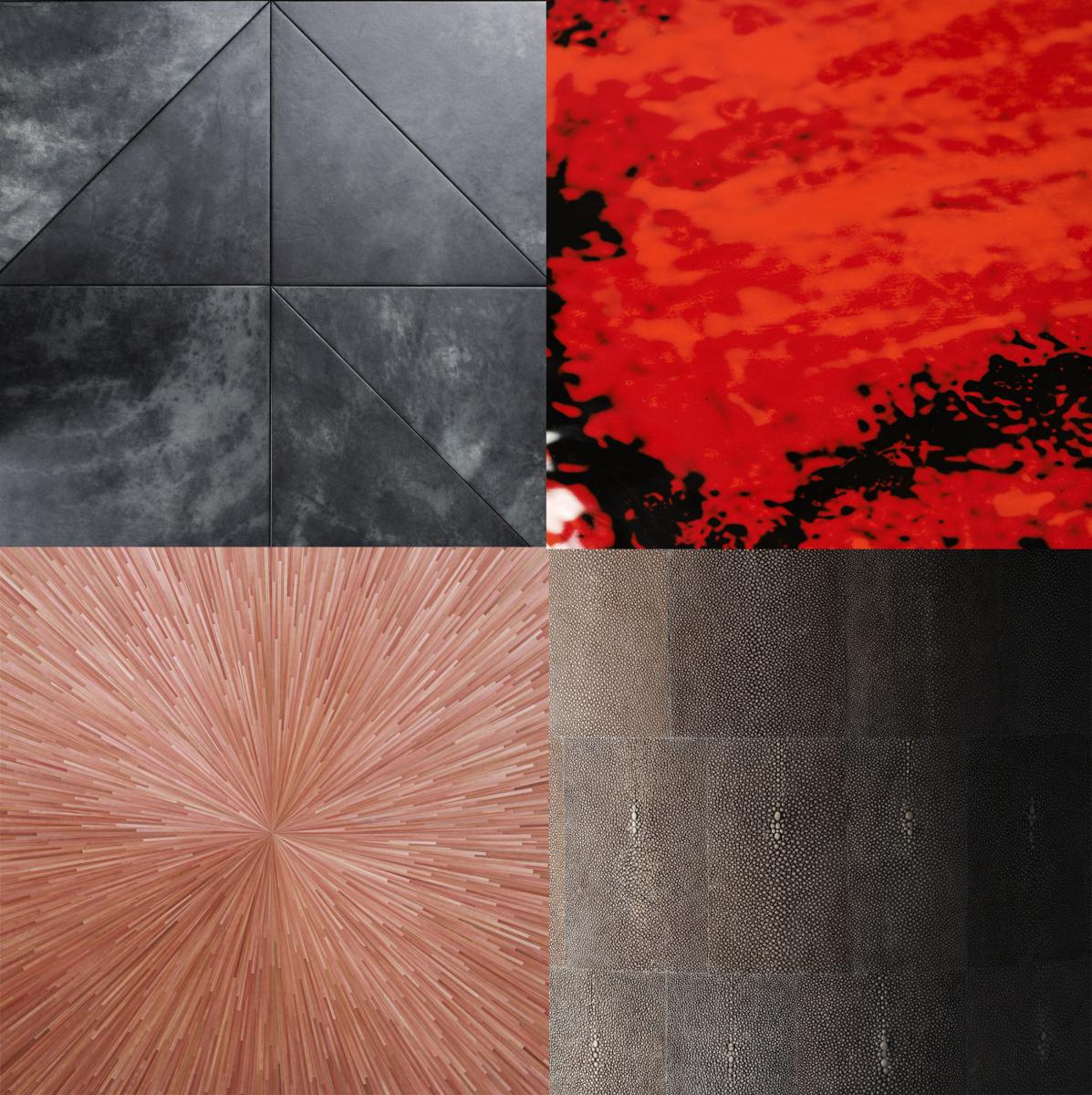
Alexander Lamont’s signature materials : Parchment, Lacquer , Straw Marquetry and shagreen
My inspiration when it comes to materials is not so much about the tradition, the antiquity of a particular material or craft method,it’s about looking for connection with the natural world of materials.
The feel and texture of parchment is somewhere between a drum skin and a tissue. It has a smooth strength and a velvety softness and a burnished aspect like certain papers. For the interior designer parchment is like a textured canvas – it offers plains of colour with beautiful points of interest, and the energy of hand-craft without heaviness or over-embellishment.
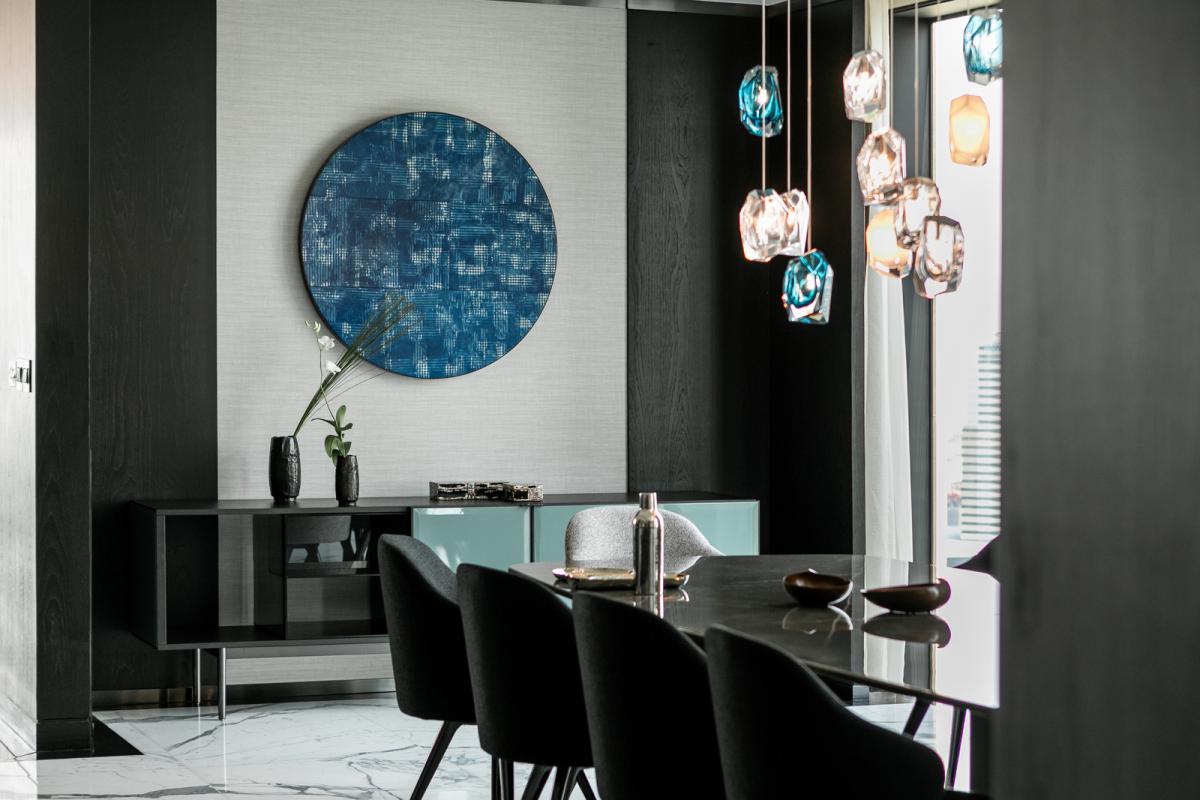
Wall Disc Wave Indigo Parchment, Private Residence Bangkok

Turtle Coffee Table , dorsal shapes in sculpted form and parchment top
The secret to successfully using it as a decorative material is the selection, pairing and juxtaposition of each skin to achieve the desired tone on tone effect, while consciously arranging the subtle underlying pattern from the skin’s natural markings. It takes a practiced expert eye to choose the skins and design the layout for each project.
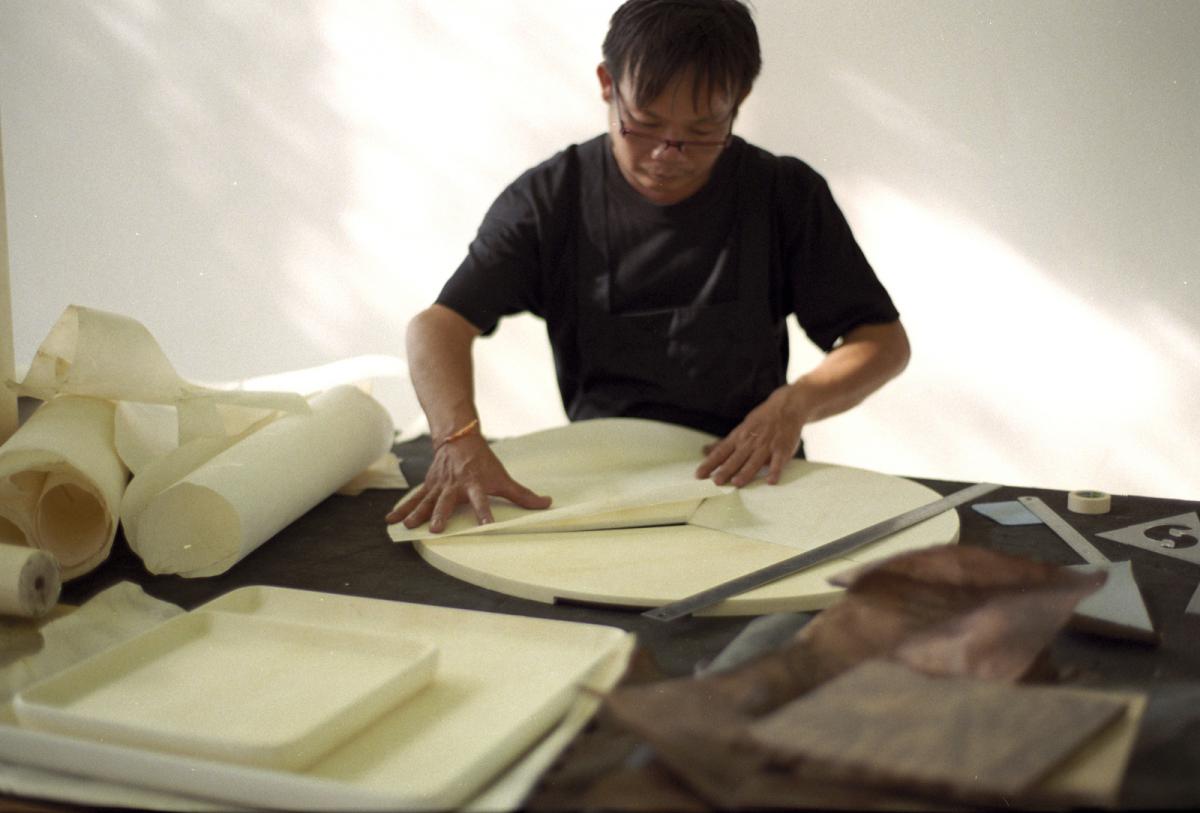
A craftsman in our workshop applying parchment onto a table top
Alexander Lamont workshop has developed many innovations in parchment over the years which can be seen in some of company’s most iconic designs. From the “coral” parchment developed for the Ocean Armoire, to the “embossed” parchment of the Dover Tansu and the indigo parchment used on the Wishbone Table we are constantly experimenting with the material finish.
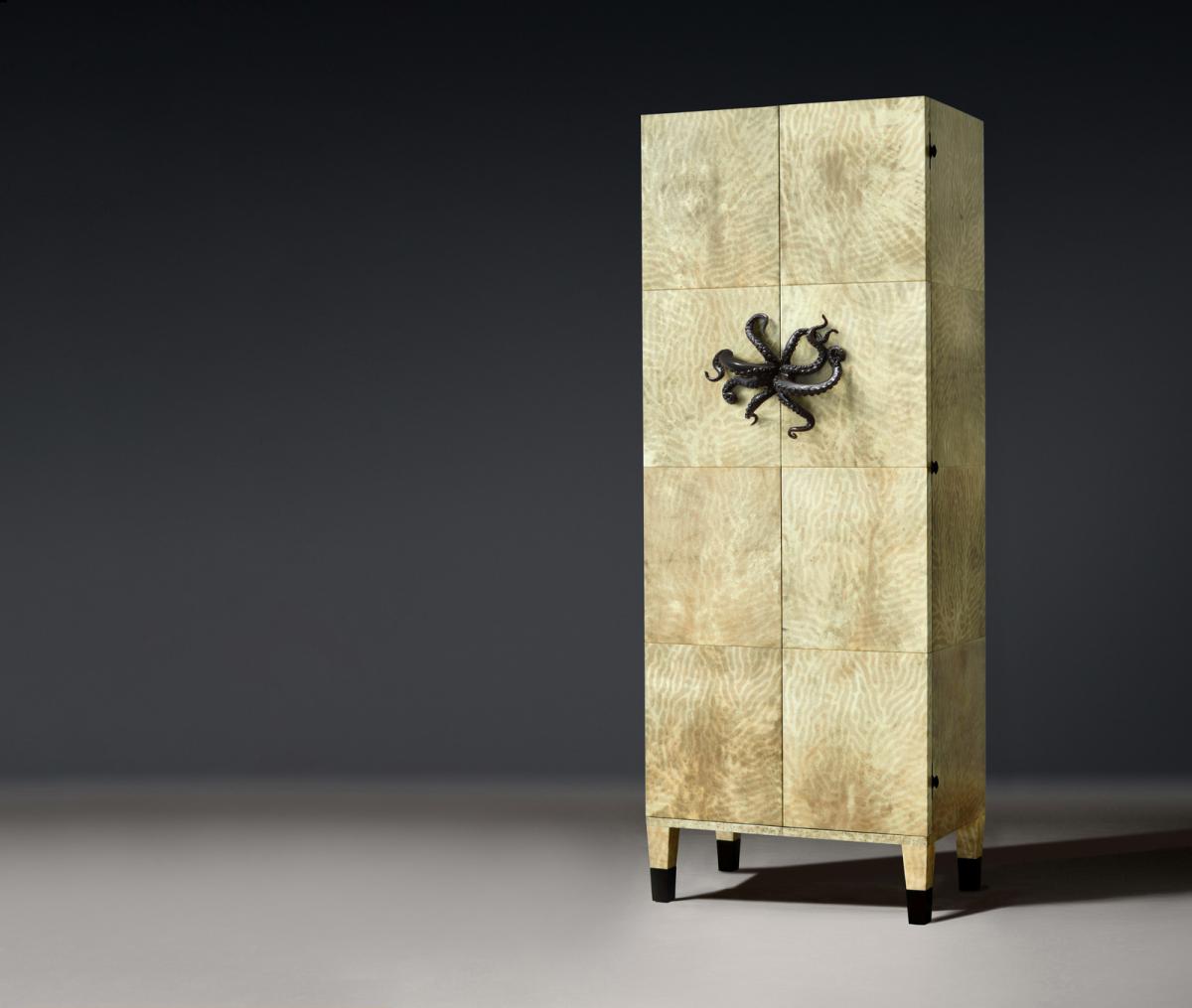
Ocean Armoire, for this piece we developed a way to apply coral patterns on to the parchment while keeping the naturally 'wild' texture of the skins.

Dover Tansu, drawer faces in natural parchment
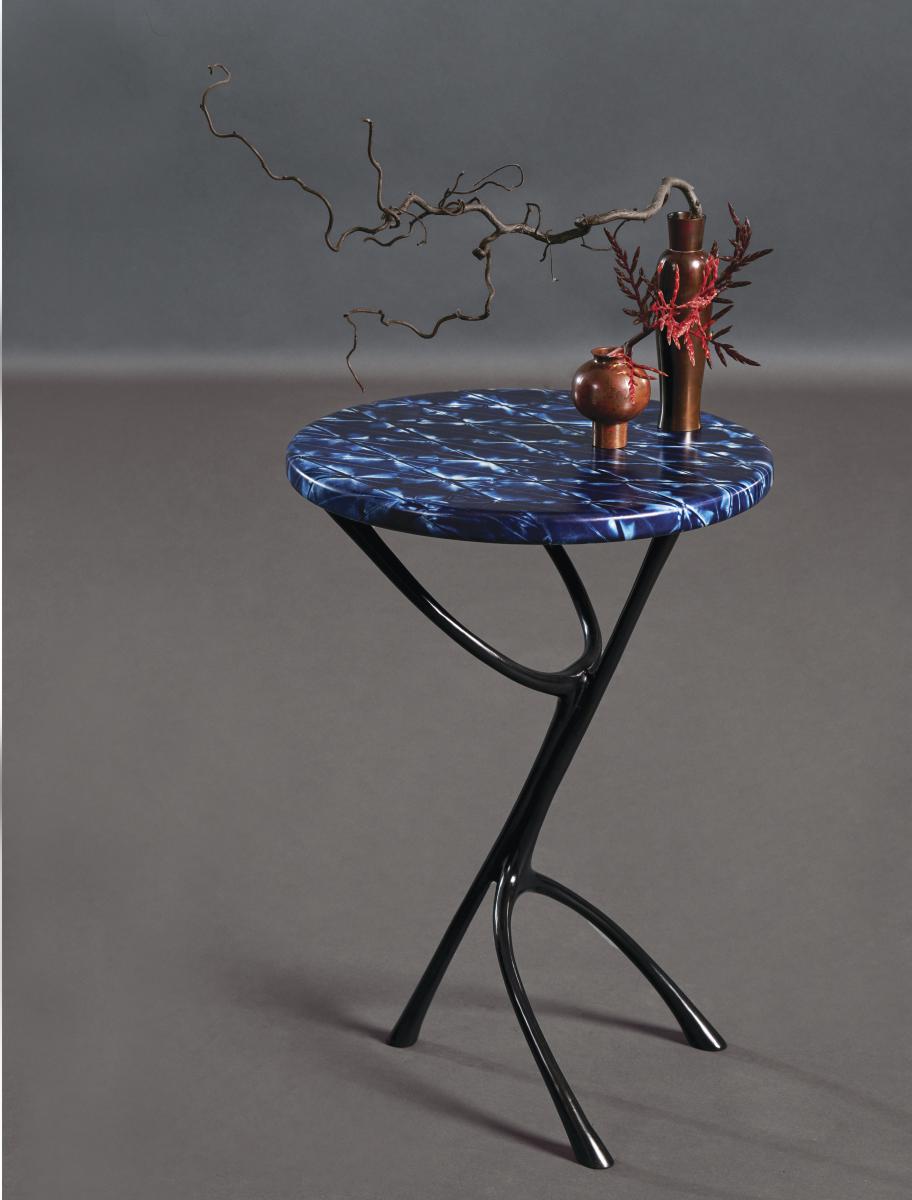
Wishbone Side Table, fine shiburi dyeing with natural indigo is used to accent the parchment top with a beautiful pattern
Why we come back to parchment is why it has been around for centuries – there are not that many elegant natural materials. Parchment will always be chosen for its plains of colour and its simple tactile luxe
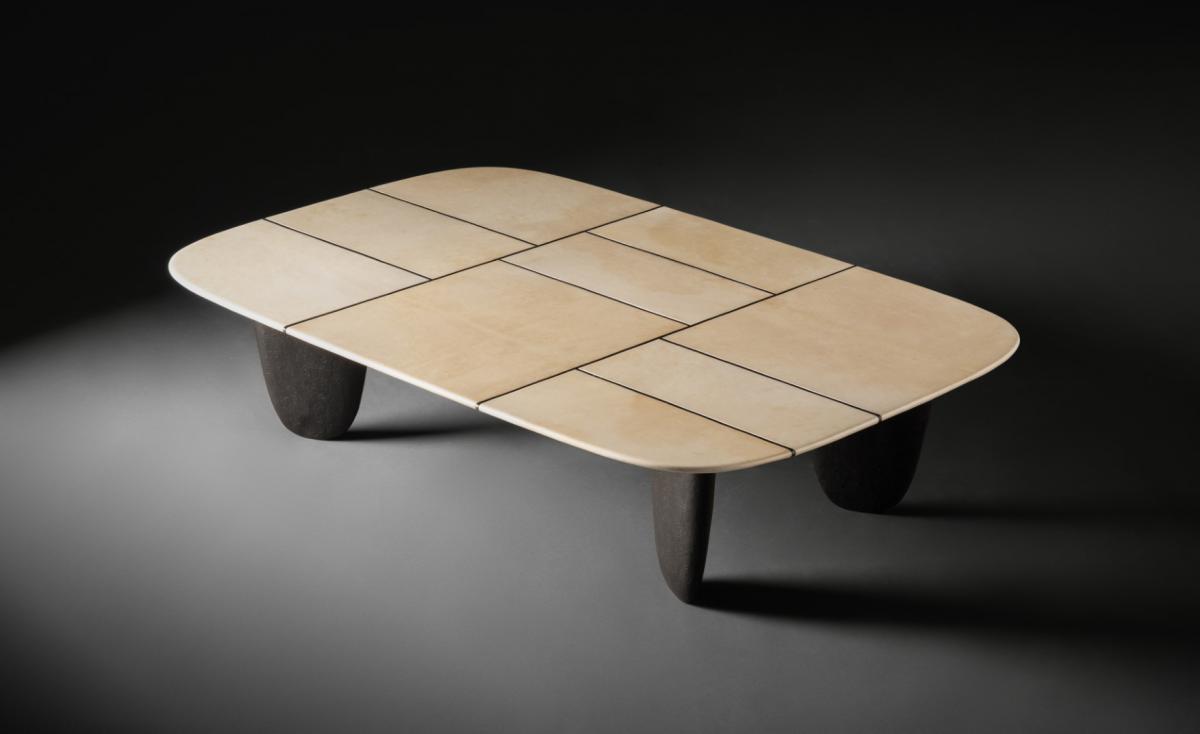
Medina Coffee Table, natural parchment panels are separated by inlaid bronze lines creating a minimal shield-like table with a fine profile.
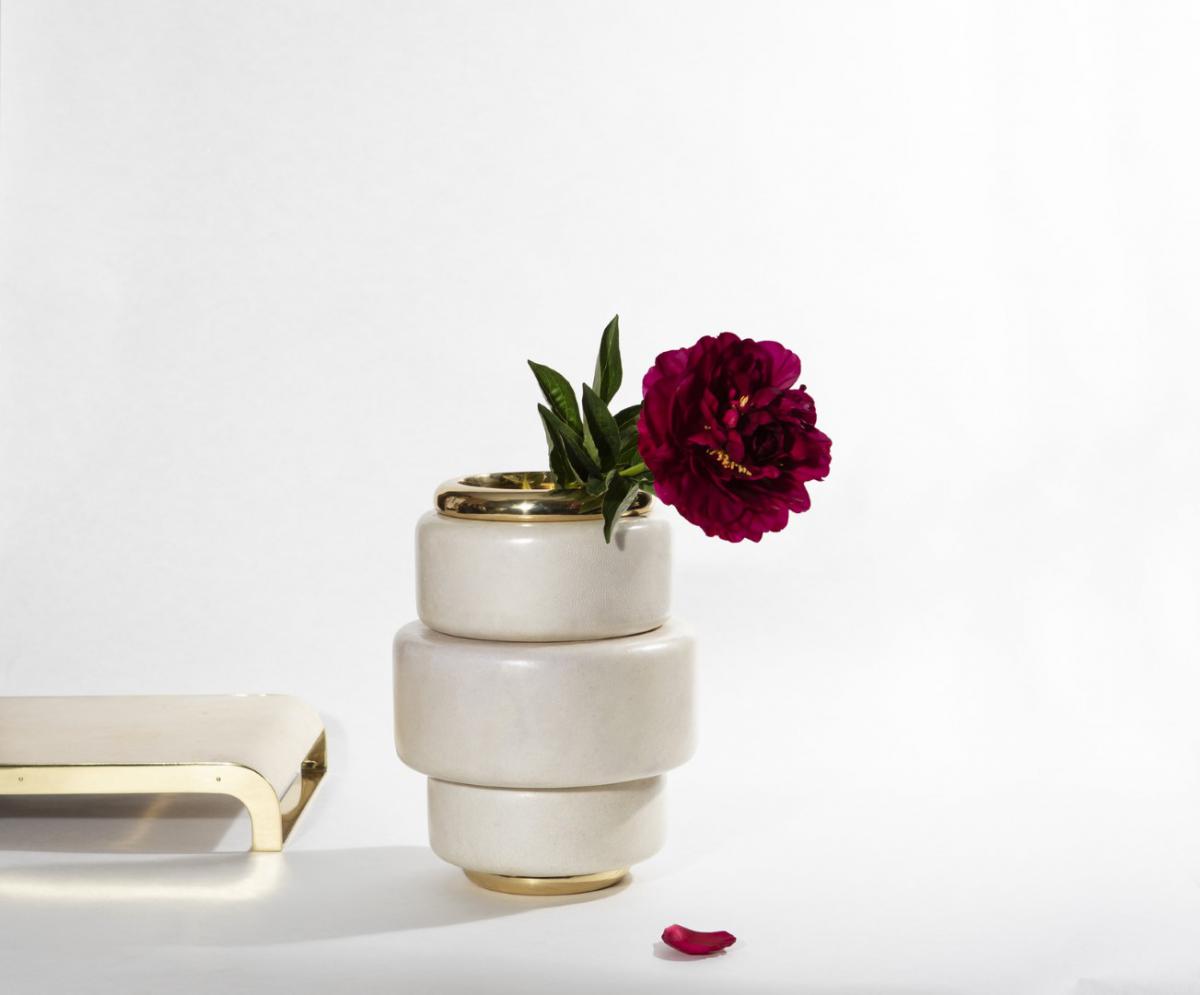
Bristol Vase, round rings of grained ivory parchment are wrapped around a voluptuous form
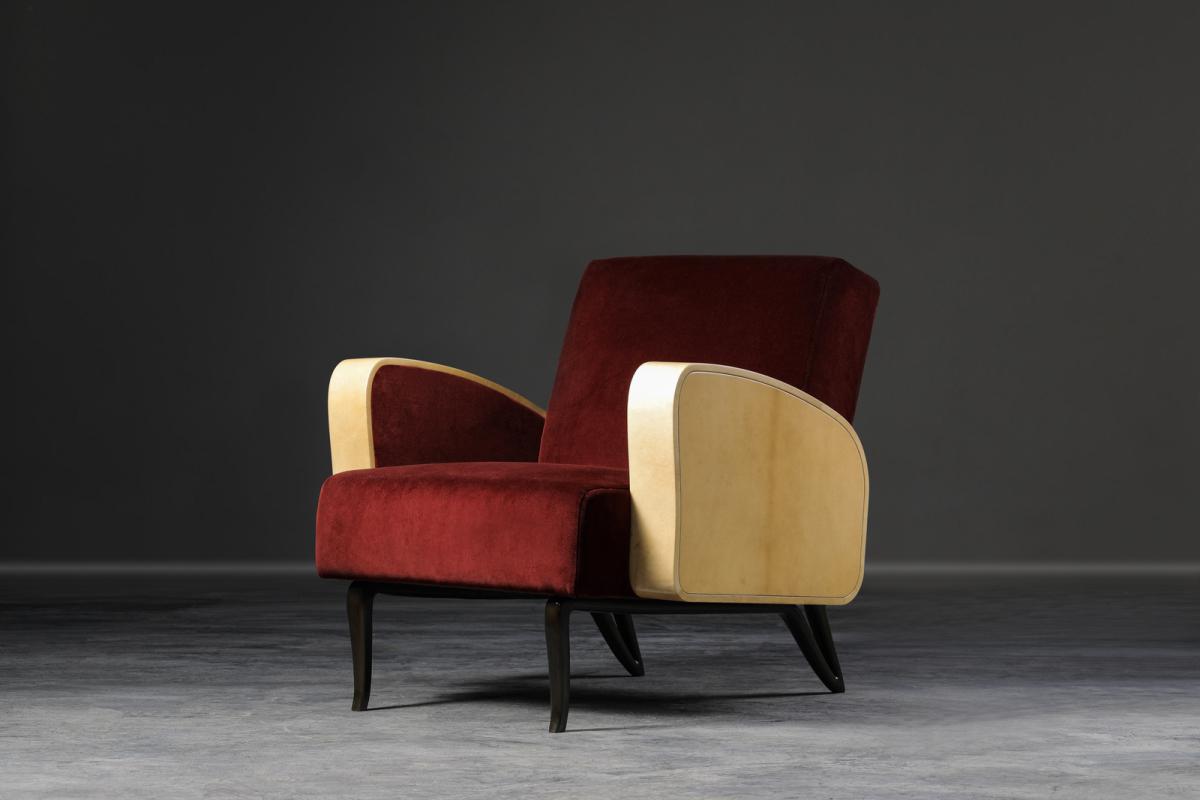
Mirador Lounge Chair, parchment armrests bring an unexpected luxurious natural element

Richly lacquered parchment is full of raw natural variety and also extremely durable and user-friendly
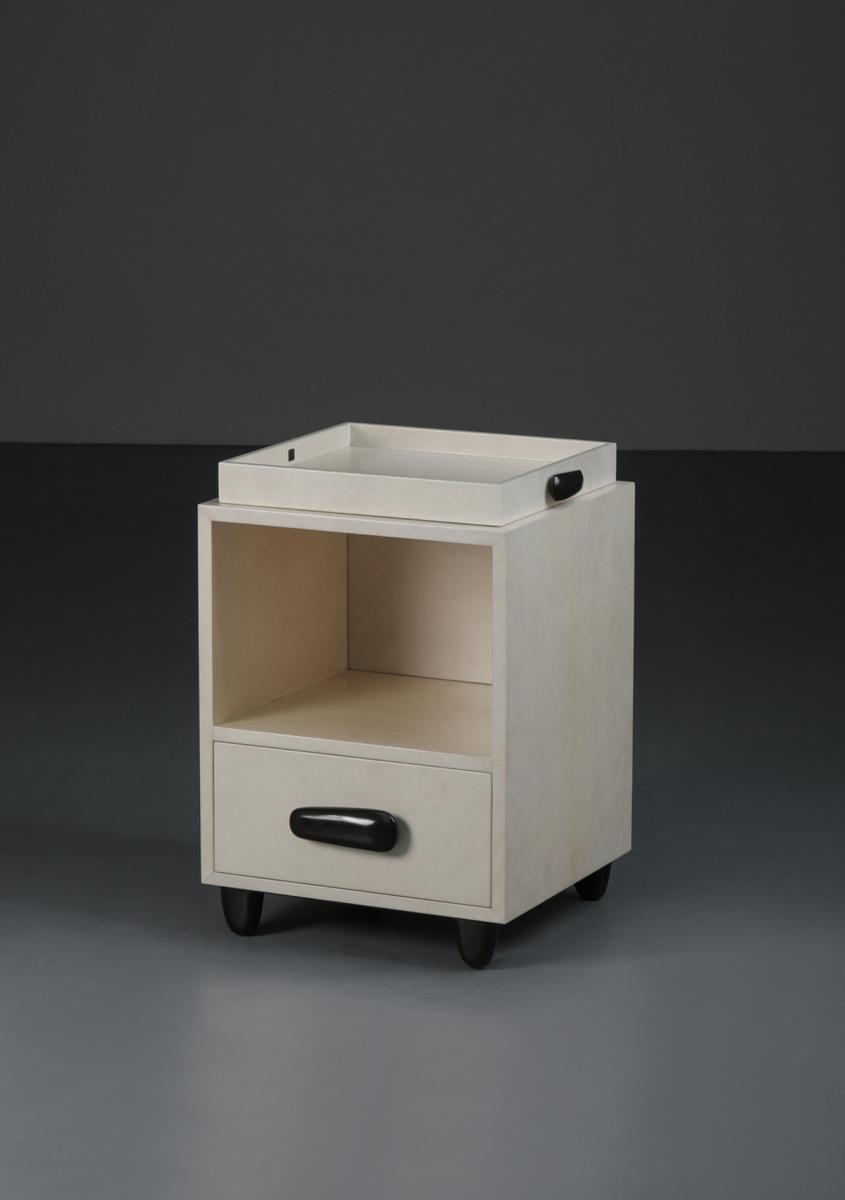
Howdah Nightstand, Ivory parchment wraps every surface

Portico Side Tables are delicious functional side tables bringing an accent of luxurious parchment to any living room
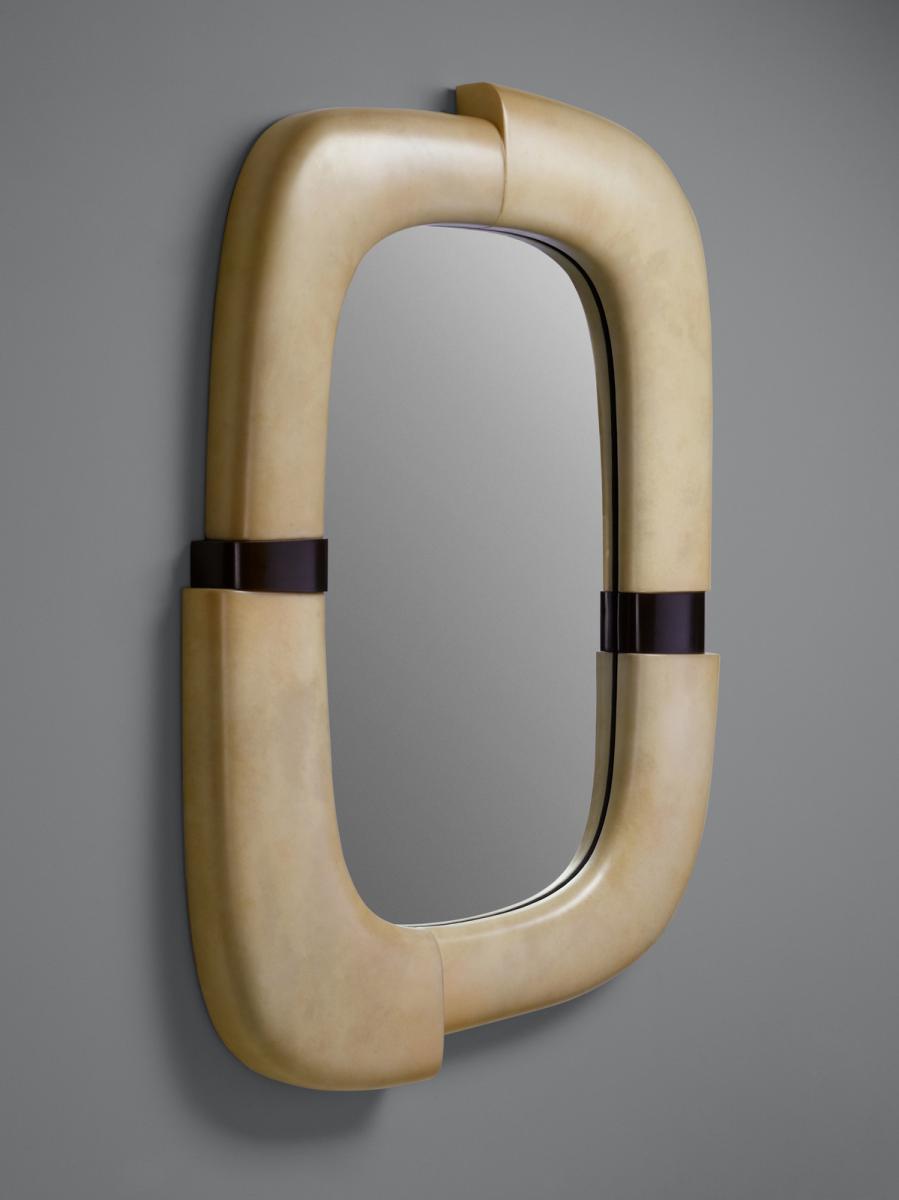
Aquifer Mirror, asymmetrical parchment elements rise and fall to create a bracelet-surround accented with bronze cuffs
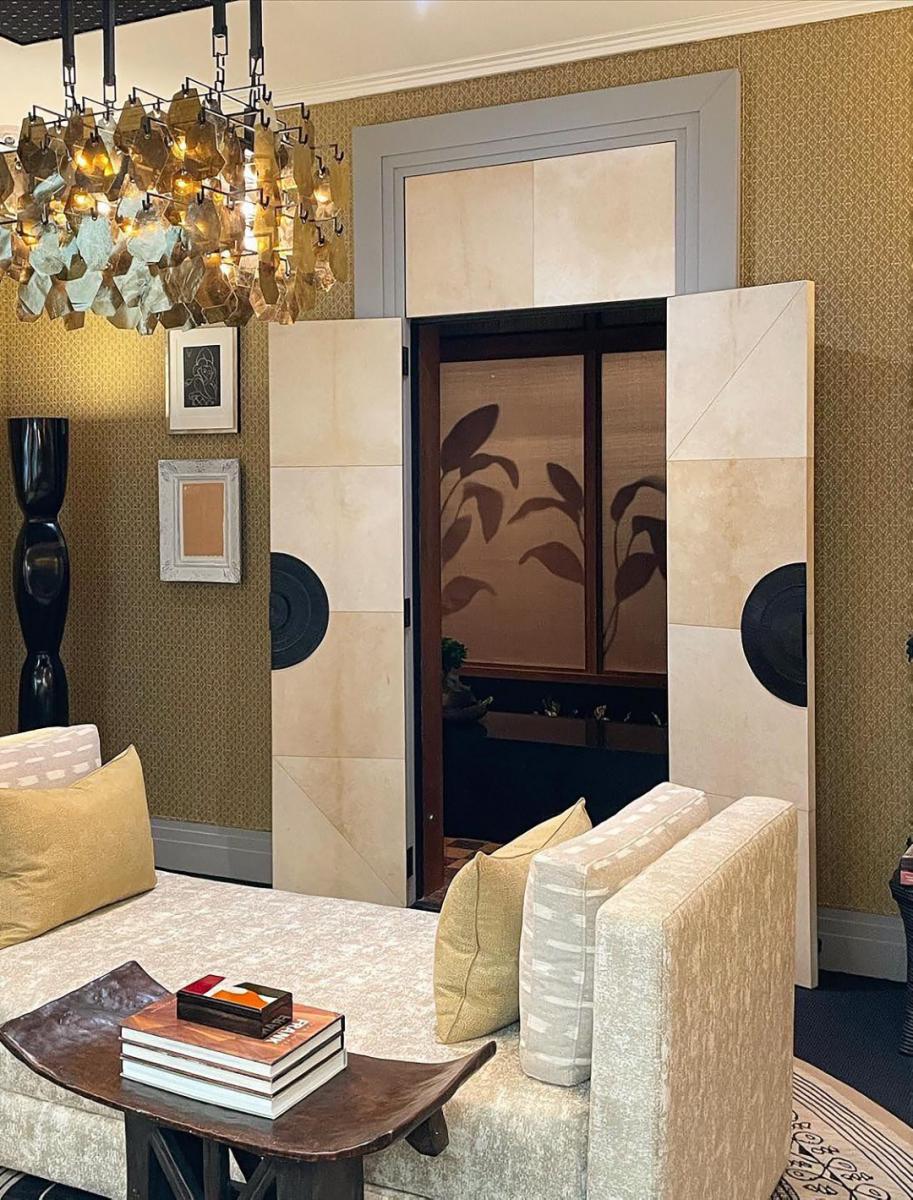
A pair of parchment doors made in our workshops on display at WOW! House Event 2023, Photography by James Macdonald


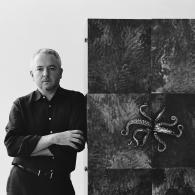
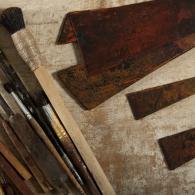
Add new comment